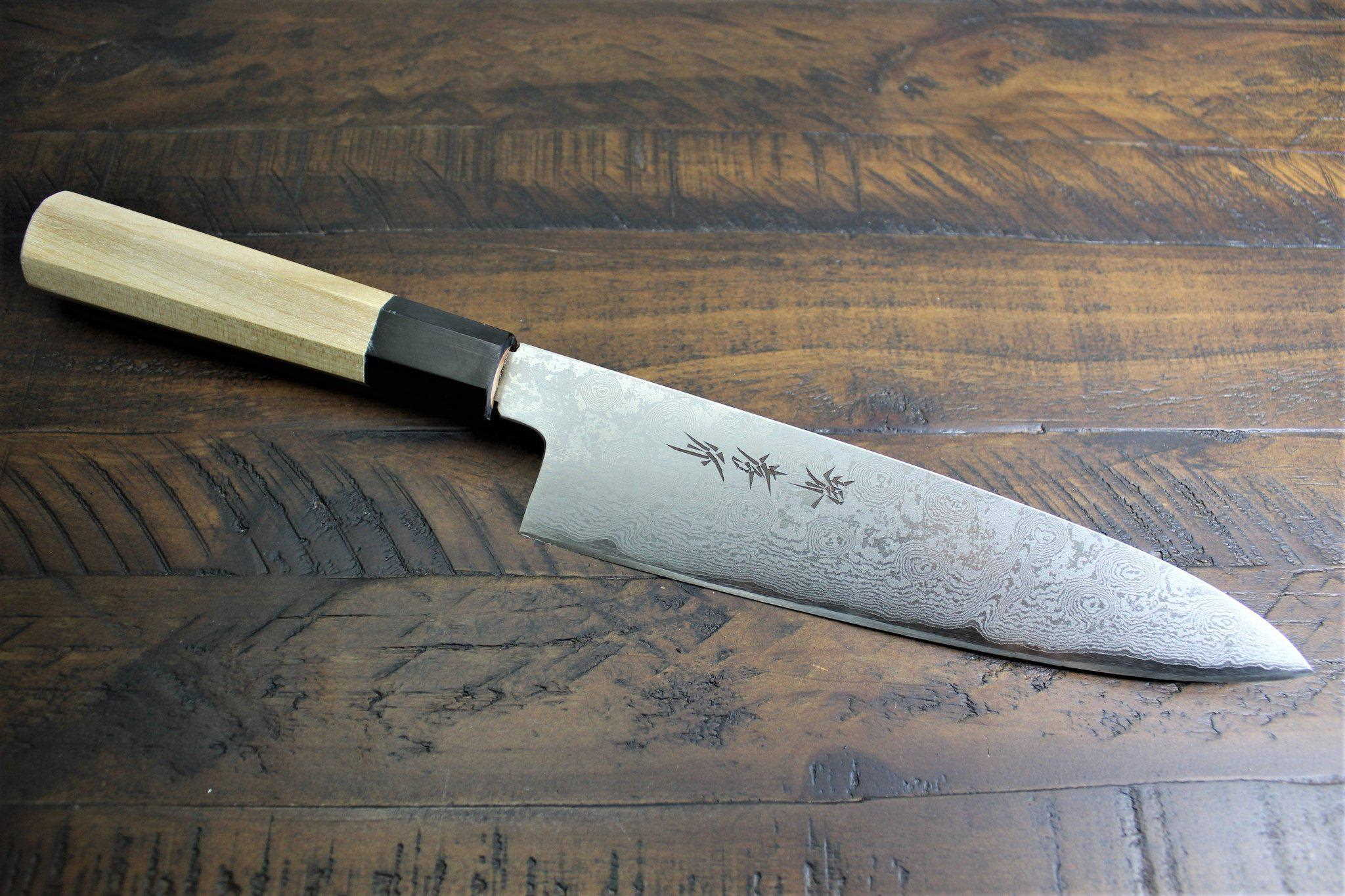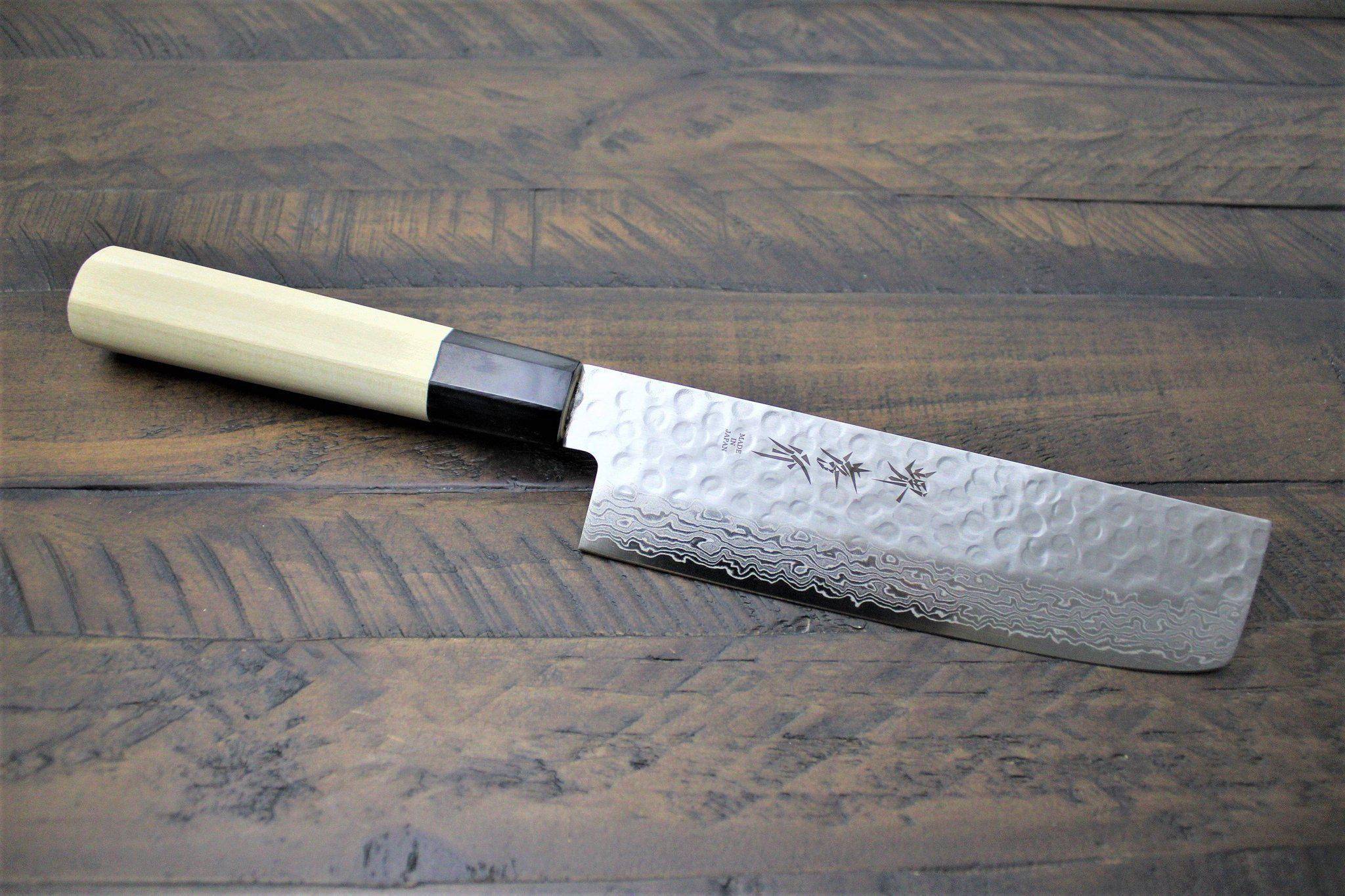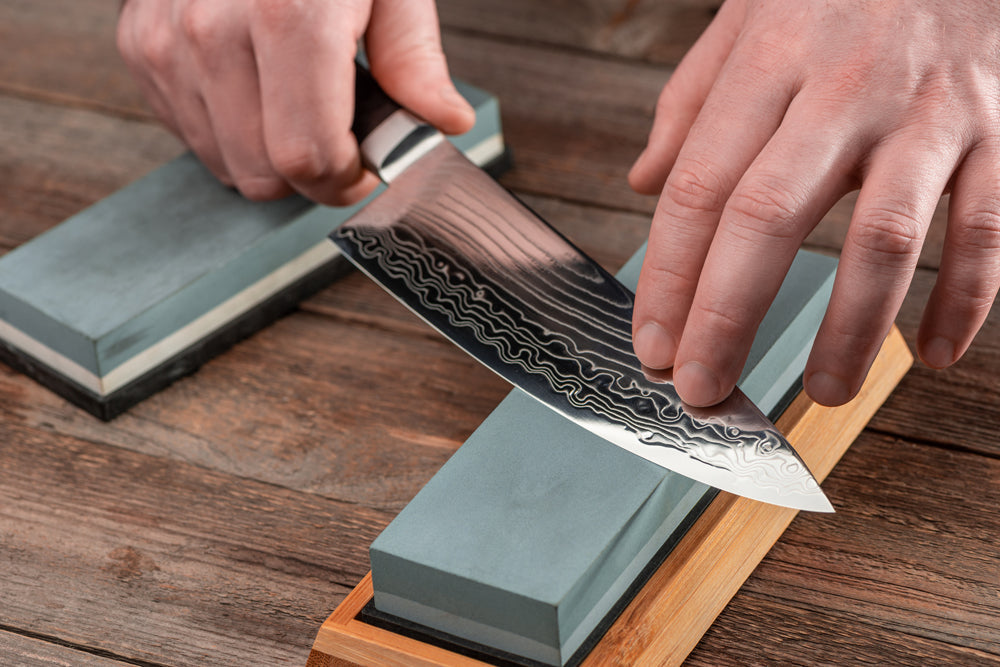
What are Gyuto Knives Used For?
Gleaming. Sharp. Defined. An excellently crafted gyuto knife is an essential tool for every kitchen. The Japanese version of the traditional chef's knife, the versatile gyuto knife, has gained popularity across the Western Hemisphere.
For clients new to the world of artisan Japanese kitchen knives, the unfamiliar names may leave them feeling overwhelmed and unsure as to what to look for. Our experts at Hasu-Seizo will break down the many dynamic uses of the gyuto knife, as well as how to select the proper blade for work within your kitchen.
Gyuto Knife Buying Guide: Inside the Top Chef's Knives of Japan
When we discuss prominent kitchen knives in Japan, an array of different blades might come to mind. Prominent knives include santoku, nakiri, and sujihiki. While there are plenty of knives to pick from, the gyuto knife operates as a standard-bearer for them all.
First, let us take a moment to properly quantify what a gyuto knife is.
- A gyuto knife is a traditional Japanese chef's knife used for working with vegetables, meat, and other general-purpose activities. Gyuto knives are dynamic utensils as they allow for chopping, slicing, disjointing, dicing, and julienning. The average gyuto blade will measure between 180 mm and 270 mm.
- These Japanese chef’s knives have a double bevel edge and come with handles in both the traditional Japanese style, with a partial tang, as well as western styles with a full tang.
Now that we have an understanding of what gyuto knives are, we can walk you through a few of their key benefits.
- Sharp Knives for Multi-Faceted Use - Gyuto knives by manufacturers like Sakai Takayuki showcase exceptional blade sharpness to provide for dynamic use within the kitchen. Expertly crafted and made to last, gyuto blades are as good for chopping vegetables as they are slicing sashimi.
- Lightweight & Ergonomic - Most Japanese kitchen knives are incredibly lightweight and efficiently designed. Often customers will find that their Japanese chef's knives feature an octagon beveled grip to allow for comfortable handling.
- Durable Blade Material - Gyuto knives come in stainless steel and carbon steel The style of blade chosen will depend mainly on what maintenance practices you are willing to do, budget constraints, and expertise of the shopper in question.
- Stainless Steel Blades - A stainless steel gyuto knife is ideal for the average chef because it is resistant to discoloration as well as rust. Due to their material, these knives require more regular sharpening.
- Carbon Steel Blades - Carbon steel gyuto knives hold an edge much longer than their stainless steel counterparts and do not need to be sharpened as frequently. However, carbon steel blades require regular maintenance. Water needs to be wiped away immediately and if they are stored for any period of time, a lite coating of mineral or camelia oil should be applied.
Japanese kitchen knives are fascinating because of their high level of quality and vast history. They are largely made throughout several key cities in Japan, including Seki, Sakai, and Echizen.
When to Reach For a Gyuto Knife in the Kitchen
Gyuto knives operate as traditional chef's knives throughout Japan, and they hold that same reputation around the world. Gyuto knives are one of the most versatile chef knives on the market thanks to their thin blade, improved edge retention, and lightweight maneuverability.
As a result of their dynamic and professional craftsmanship, gyuto knives can be used for the following:
- Cutting Meat - Also known as the 'beef knife', the gyuto knife is revered in Japan for its versatility when cutting meat. The blades are easy to maintain which allows for a focused, sharpened blade that gives clean, fast, and proper cuts to meat or fish.
- Working with Vegetables - Thanks to the hardy blade retention, you can use your gyuto knives to cut vegetables without any risk of dulling your blade.
- Multi-Purpose Kitchen Knife - Gyuto knives are similar to traditional western chef's knives in regards to their multi-purpose nature. This means you can use them for just about every aspect of work in the kitchen. From mincing and chopping to dicing and slicing, a sharp and well-maintained gyuto knife can get the job done every time.
Stock Your Kitchen with Fine Japanese Knives from Hasu-Seizo
Shopping for the perfect Japanese kitchen blade should not be a difficult experience. Hasu-Seizo is a family-owned and operated business that offers handcrafted Japanese knives from our base in Seattle, WA. Established by residents from Osaka in Japan, Sakai Takayuki incorporates Japanese techniques, technology, and tradition to craft authentic and quality blades.
Our team at Hasu-Seizo believes the gyuto knife should be an essential addition to every kitchen. With a focus on artistic craftsmanship and long-lasting functionality, chefs of all experience levels should consider adding this knife to their collection. Acquire an artisanal gyuto knife from Hasu-Seizo and experience the difference for yourself!




